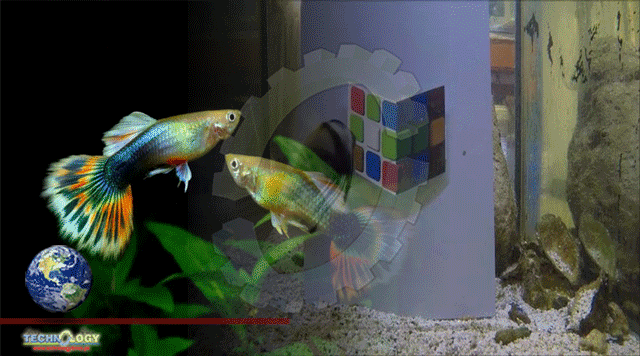The way guppy fish behave suggests they can be tricked into believing holes are larger or smaller than they really are – but they don’t always interpret the optical illusions in the same way humans do.

Guppy fish can be fooled by optical illusions into believing objects are smaller or larger than they really are. This suggests they might not always make the best choices in their natural environment.
The discovery means the fish now join the ranks of primates, dogs, cats, horses and bearded dragons that have all previously demonstrated an ability to be fooled by the visual effects, says Maria Santacà at the University of Padova, in Italy.
“If you’re tricked by these irrelevant [illusional] clues, such as the size of the hole you want to pass through, this is quite important because if you misjudge the size of the hole you could get [stuck and therefore] attacked by predators, or you could die,” Santacà says. “So this could have an important [consequence] on the daily life of fish.”
Santacà and her colleagues first determined that guppy fish (Poecilia reticulata) would consistently swim through the larger of two holes in a barrier placed inside their aquarium – even when the larger hole had a diameter only 0.4 millimetres greater.
Then they placed 36 of the guppy fish, six at a time, in a different tank with another barrier containing just two holes. Although both holes were of equal size, the researchers made them part of optical illusions known to fool humans into perceiving one of the two holes as larger. They then watched to see whether the guppy fish showed a preference for swimming through one hole over the other – which would suggest the fish also perceived one hole as larger.
They found that the guppy fish did show a preference. When the team recreated what is known as the Ebbinghaus illusion, in which a ring of circles drawn around the central hole can make the hole appear either larger or smaller than it really is, the fish responded by swimming through the hole that a human would interpret as the larger of the two.
However, when the researchers recreated a different illusion called the Delboeuf illusion, in which a single circle around the hole can make the hole appear larger or smaller than it really is, the fish swam through the hole that humans would perceive as smaller.
This difference in perception might have an evolutionary background, speculates Santacà: the guppies might perceive the Delboeuf illusion’s ring around the circle as a little like the open mouth of a predatory fish, for example, and seek to avoid it.
Whatever the decision processes at work, the findings suggest that the brains of guppies, like those of humans and many other animals, sometimes create errors when translating two-dimensional images of the world on their retinas into a three-dimensional representation of their external world, says Santacà.
Ecologically speaking, this means guppies might be fooled by their natural surroundings, especially when it comes to passageways they should swim through. It would make sense that such “errors” would get eliminated through evolution, Santacà says. The fact that they still exist in both humans and animals remains puzzling.
Source: News Nation USA